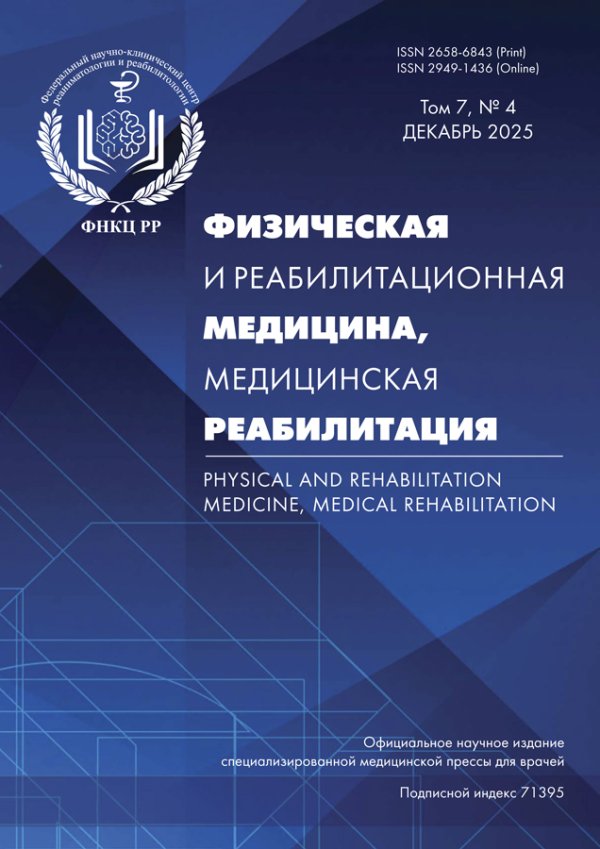Критерии диагностики дисфункции крестцово-подвздошного сустава у детей и подростков с болью в пояснично-крестцовом отделе позвоночника
- Авторы: Задорина-Негода Г.Н.1, Новосёлова И.Н.1,2
-
Учреждения:
- Научно-исследовательский институт неотложной детской хирургии и травматологии
- Российская медицинская академия непрерывного профессионального образования
- Выпуск: Том 5, № 1 (2023)
- Страницы: 17-29
- Раздел: ОРИГИНАЛЬНОЕ ИССЛЕДОВАНИЕ
- URL: https://journals.rcsi.science/2658-6843/article/view/132842
- DOI: https://doi.org/10.36425/rehab114783
- ID: 132842
Цитировать
Полный текст
Аннотация
Обоснование. Боль в спине во многом связана со снижением объёма динамической двигательной активности на фоне увеличения статической нагрузки. У пациентов с активным образом жизни боль может возникать при нарушении техники выполнения упражнений, включая длительную асимметричную нагрузку, и при выполнении привычных нефизиологических движений. Всё это может приводить к вторичным костно-суставным нарушениям, таким как дисфункция крестцово-подвздошного сочленения, что часто является причиной неспецифической боли в спине. Учитывая неоднозначность существующей информации о вариантах, выраженности и значимости данной дисфункции, проведено исследование с целью систематизации данных и создания оптимального алгоритма диагностики.
Цель исследования ― разработать систему диагностического обследования пациентов с болью в спине и сопутствующей дисфункцией крестцово-подвздошных суставов, позволяющую выявить основные причины формирования боли.
Материалы и методы. В проспективном исследовании приняли участие 54 пациента в возрасте от 7 до 18 лет (средний возраст 14,6±3,32) с подтверждённой дисфункцией крестцово-подвздошного сустава и с исключением специфических причин боли в спине. Все пациенты были разделены на 2 группы, идентичные по числу, полу и возрасту участников. Проведено обязательное клинико-неврологическое и нейроортопедическое обследование с дополнительным мануальным и функциональным тестированием, включая тесты на нестабильной опоре и реабилитационном оборудовании (Alter G, TecnoBody, Oxyterra).
Результаты. Выявлены анамнестические предикторы возникновения дисфункции крестцово-подвздошного сочленения. Проанализированы особенности постуральных и биомеханических нарушений у детей и подростков при неспецифической боли в спине. Выявлены цервикальные нарушения, приводящие к вторичным костно-суставным дисфункциям, включая блокирование крестцово-подвздошного сочленения. Разработан диагностический алгоритм, позволяющий выявить основную причину боли в спине при наличии дисфункции крестцово-подвздошного сочленения.
Заключение. Предлагаемый диагностический алгоритм упрощает и систематизирует работу с группой пациентов, предъявляющих жалобы на боли в спине при наличии дисфункции крестцово-подвздошного сочленения. Повышается эффективность реабилитации за счёт возможности подбора оптимальной методики восстановления.
Полный текст
Открыть статью на сайте журналаОб авторах
Галина Николаевна Задорина-Негода
Научно-исследовательский институт неотложной детской хирургии и травматологии
Email: galinazadorina@gmail.com
ORCID iD: 0000-0002-0869-4591
SPIN-код: 9504-9352
н.с
Россия, 119180, Москва, ул. Б. Полянка, д. 22Ирина Наумовна Новосёлова
Научно-исследовательский институт неотложной детской хирургии и травматологии;Российская медицинская академия непрерывного профессионального образования
Автор, ответственный за переписку.
Email: i.n.novoselova@gmail.com
ORCID iD: 0000-0003-2258-2913
SPIN-код: 1406-1334
д.м.н.
Россия, 119180, Москва, ул. Большая Полянка, 22; МоскваСписок литературы
- Cohen S.P., Chen Y., Neufeld N. Sacroiliac joint pain: a comprehensive review of epidemiology, diagnosis and treatment // Expert Rev Neurother. 2013. Vol. 13, N 1. P. 99–116. doi: 10.1586/ern.12.148
- Vanelderen P., Szadek K., Cohen S.P. Sacroiliac joint pain // Pain Pract. 2010. Vol. 10, N 5. Р. 470–478. doi: 10.1111/j.1533-2500.2010.00394
- Исайкин А.И., Кузнецов И.В., Кавелина А.В., Иванова М.А. Неспецифическая люмбалгия: причины, клиника, диагностика, лечение // Neurology Neuropsychiatry Psychosomatics. 2015. Т. 7, № 4. С. 101–109. doi: 10.14412/2074-2711-2015-4-101-109
- Ченский А.Д., Слиняков Л.Ю., Черепанов В.Г., Терновой К.С. Диагностика и лечение синдрома крестцово-подвздошного сустава // Кафедра травматологии и ортопедии. 2015. № 2. С. 12–16.
- Мусалатов Х.А., Ченский А.Д., Макиров С.К., Слиняков Л.Ю. Синдром межпозвонковых и крестцово-подвздошных суставов (facet syndrome) при патологии пояснично-крестцового отдела позвоночника // Вестник травматологии и ортопедии им. Н.Н. Приорова. 2002. Т. 9, № 3. С. 25–30. doi: 10.17816/vto99929
- Хабиров Ф.А., Хабиров Р.А. Мышечная боль. Казань: Книжный дом, 1995. 206 с.
- Подчуфарова Е.В. Боль в спине и ее лечение // Неврология, нейропсихиатрия, психосоматика. 2009. Т. 1. № 2. С. 29–37. doi: 10.14412/2074-2711-2009-35
- Парфенов В.А., Яхно Н.Н., Давыдов О.С., и др. Дискогенная пояснично-крестцовая радикулопатия. Рекомендации Российского общества по изучению боли (РОИБ) // Неврология, нейропсихиатрия, психосоматика. 2020. Т. 12, № 4. С. 15–24. doi: 10.14412/2074-2711-2020-4-15-24
- Верткин А.Л., Каратеев А.Е., Кукушкин М.Л., и др. Ведение пациентов с болью в спине для терапевтов и врачей общей практики (клинические рекомендации) // Терапия. 2018. № 2. С. 8–17.
- Franz C., Moller N.C., Korsholm L., et al. Physical activity is prospectively associated with spinal pain in children (CHAMPS Study-DK) // Sci Rep. 2017. Vol. 7, N 1. Р. 11598. doi: 10.1038/s41598-017-11762-4
- Сергеев А.В., Екушева Е.В. Боль в спине у детей и подростков // Русский медицинский журнал. 2019. Т. 27, № 9. С. 28–32.
Дополнительные файлы
















